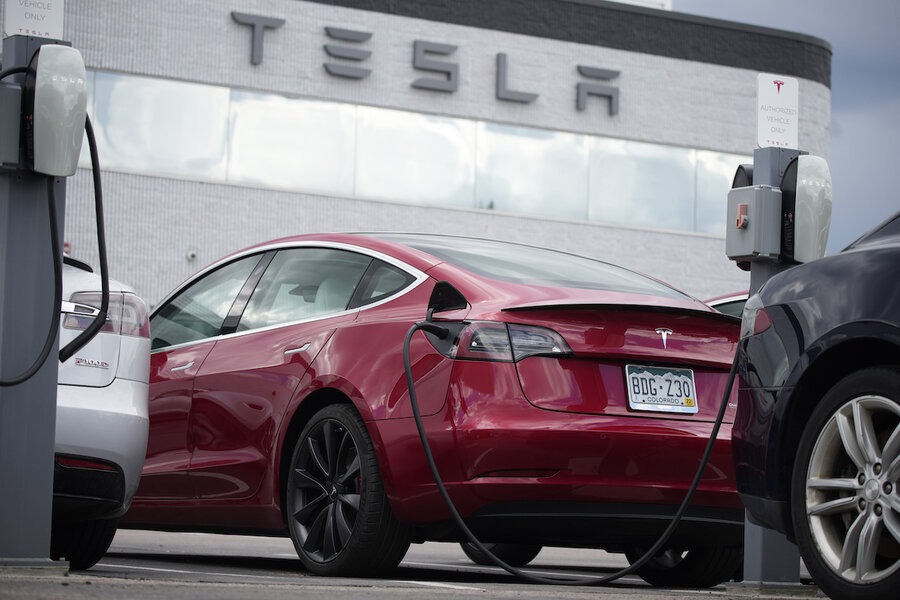Why Teslas may be driving themselves into a recall
Loading...
Teslas with partially automated driving systems are a step closer to being recalled after the U.S. elevated its investigation into a series of collisions with parked emergency vehicles or trucks with warning signs.
The National Highway Traffic Safety Administration said Thursday that it is upgrading the Tesla probe to an engineering analysis, another sign of increased scrutiny of the electric vehicle maker and automated systems that perform at least some driving tasks.
Documents posted Thursday by the agency raise some serious issues about Tesla’s Autopilot system. The agency found that it’s being used in areas where its capabilities are limited, and that many drivers aren’t taking action to avoid crashes despite warnings from the vehicle.
The probe now covers 830,000 vehicles, almost everything that the Austin, Texas, carmaker has sold in the U.S. since the start of the 2014 model year.
NHTSA reported that it has found 16 crashes into emergency vehicles and trucks with warning signs, causing 15 injuries and one death.
Investigators will evaluate additional data, vehicle performance, and “explore the degree to which Autopilot and associated Tesla systems may exacerbate human factors or behavioral safety risks, undermining the effectiveness of the driver’s supervision,” the agency said.
A message was left Thursday seeking comment from Tesla.
An engineering analysis is the final stage of an investigation, and in most cases NHTSA decides within a year if there should be a recall or the probe should be closed.
In the majority of the 16 crashes, the Teslas issued collision alerts to the drivers just before impact. Automatic emergency braking intervened to at least slow the cars in about half the cases. On average, Autopilot gave up control of the Teslas less than a second before the crash, NHTSA said in documents detailing the probe.
NHTSA also said it’s looking into crashes involving similar patterns that did not include emergency vehicles or trucks with warning signs.
The agency found that in many cases, drivers had their hands on the steering wheel as Tesla requires, yet failed to take action to avoid a crash. This suggests that drivers are complying with Tesla’s monitoring system, but it doesn’t make sure they’re paying attention.
In crashes where video is available, drivers should have seen first responder vehicles an average of eight seconds before impact, the agency wrote.
The agency will have to decide if there is a safety defect with Autopilot before pursuing a recall.
Investigators also wrote that a driver’s use or misuse of the driver monitoring system “or operation of a vehicle in an unintended manner does not necessarily preclude a system defect.”
The agency document all but says Tesla’s method of making sure drivers pay attention isn’t good enough, that it’s defective, and should be recalled, said Bryant Walker Smith, a University of South Carolina law professor who studies automated vehicles.
“It is really easy to have a hand on the wheel and be completely disengaged from driving,” he said. Monitoring a driver’s hand position is not effective because it only measures a physical position. “It is not concerned with their mental capacity, their engagement, or their ability to respond.”
Similar systems from other companies such as General Motors’ Super Cruise use infrared cameras to watch a driver’s eyes or face to ensure they’re looking forward. But even these systems may still allow a driver to zone out, Mr. Walker Smith said.
“This is confirmed in study after study,” he said. “This is established fact that people can look engaged and not be engaged. You can have your hand on the wheel and you can be looking forward, and not have the situational awareness that’s required.”
In total, the agency looked at 191 crashes but removed 85 of them because other drivers were involved or there wasn’t enough information to do a definite assessment. Of the remaining 106, the main cause of about one-quarter of the crashes appeared to be running Autopilot in areas where it has limitations, or in conditions that can interfere with its operation.
“For example, operation on roadways other than limited access highways, or operation in low traction or visibility environments such as rain, snow, or ice,” the agency wrote.
Other automakers limit use of their systems to limited-access divided highways.
The National Transportation Safety Board, which also has investigated some of the Tesla crashes dating to 2016, has recommended that NHTSA and Tesla limit Autopilot’s use to areas where it can safely operate. The NTSB also recommended that NHTSA require Tesla to have a better system to make sure drivers are paying attention. NHTSA has yet to act on the recommendations. The NTSB can only make recommendations to other federal agencies.
In a statement, NHTSA said there aren’t any vehicles available for purchase today that can drive themselves. “Every available vehicle requires the human driver to be in control at all times, and all state laws hold the human driver responsible for operation of their vehicles,” the agency said.
Driver-assist systems can help avoid crashes but must be used correctly and responsibly, the agency said.
Tesla did an online update of Autopilot software last fall to improve camera detection of emergency vehicle lights in low-light conditions. NHTSA has asked why the company didn’t do a recall.
NHTSA began its inquiry in August of last year after a string of crashes since 2018 in which Teslas using the company’s Autopilot or Traffic Aware Cruise Control systems hit vehicles at scenes where first responders used flashing lights, flares, an illuminated arrow board, or cones warning of hazards.
This story was reported by The Associated Press.





